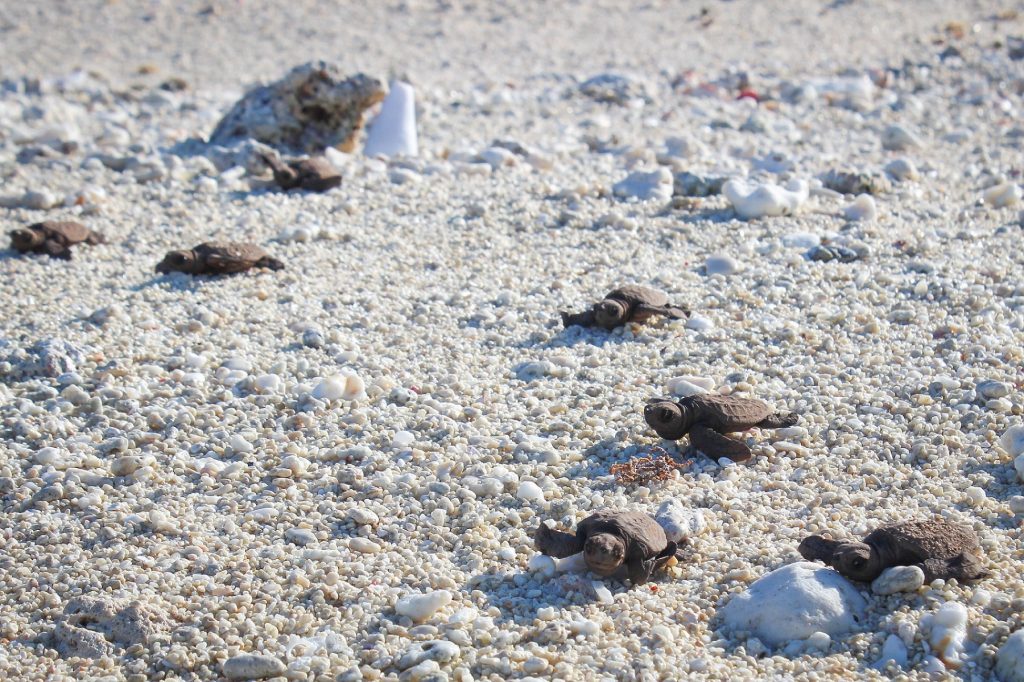Capricorn and Bunker Group to the Coral Sea: I was excited, to say the least, to join a leg of the Reef Life Survey in February 2017. Being an applied conservation scientist, I spend most of my time crunching numbers in front of a computer. Getting back to the field and seeing how some of the data I am planning to use as part of my PhD is collected, was a once in a lifetime experience.
The plan was to sail from Gladstone out to the southern Coral Sea. We had a narrow weather window so, after a quick stop at Lady Musgrave to get me up to speed with the RLS protocol, we sailed 36 hours straight to Cato Island. Our crew of three included my partner Bruce, Graham Edgar, and myself. It was the first time either of us had been out to the southern Coral Sea, and Bruce and I’s longest sailing trip to date. Graham pulled double duty as lead skipper and diver, while Bruce, a licensed yacht master, helped with the majority of sailing and I happily jumped in for every dive. We spent nearly the entire three weeks island hopping in the Coral Sea, no other boats in sight (but plenty of fish and birds!).

The weather forecasts were a bit up in the air, but it ended up being beautiful with only a few days of rain (thankfully we missed Debbie, but the next crew got to meet her!). This led to amazing diving conditions, with calm clear waters and spectacular visibility (+40 m was the norm). Since it was my first time with RLS and doing surveys in the Indo-Pacific, I started out doing the invertebrates surveys and slowly transitioned to fish. While it was challenging, I can’t think of a better way to learn then being immersed in everything fish 24/7, with private instruction from one of the leading experts in the world. We kept up a demanding pace, and with only two survey divers, we managed to complete 47 sites and a total of ~60 dives (including a few just for fun J) in 21 days.

Some of the highlights for me included a friendly Queensland Grouper, tons of curious sea snakes, walking sharks, and three sightings of the black and gold sapsucking sea slug, Cyerce nigricans (a RLS first!). On land, Bruce had fun playing with the new drone, and got some incredible shots of Eviota and the surrounding islands and reefs. On an afternoon walk around one of the islands I was fortunate enough to stumble across some hatching baby turtles, which was the icing on the cake and one of many things checked off of my bucket list during the trip. We couldn’t have asked for better weather and are extremely grateful to Graham for his patience and hospitality, and the RLS team for giving us the chance to contribute to this important citizen-science initiative.








